Back to Homepage / Blogs / Feb 2019
Birdlife on the Mekong River
Cruising on the mighty Mekong River, one experience out of the many that you can look forward to is bird-
watching. World Wildlife Fund has dubbed the Mekong Delta a 'treasure trove' of rare creatures teeming with numerous species of plants, lizards, fish, mammals and birds.
Lying to the west of Saigon, the Mekong Delta stretches all the way to the Gulf of Thailand. Nine rivers flowing
from six countries meet here, completing their journey of thousands of kilometers to the sea. For this reason, the Mekong Delta's Vietnamese name is Ðô`ng ba`ng So^ng Cu?u Long or Nine Dragon river delta.
The Mekong Delta covers over 40,500 square kilometers of southwestern Vietnam and serves as its rice
bowl. The highly fertile region feeds over 60 million people and is inhabited by approximately 20 million. And although it occupies only 10% of Vietnam's total land mass, the Mekong Delta provides 60% of
its fish and shrimps, and over a third of the country's food crops.
An expedition through the Mekong Delta will reveal a landscape predominantly dominated by lush floodplains bathed in a variety of green shades. As you move to the north and south, a few hills start to
appear.
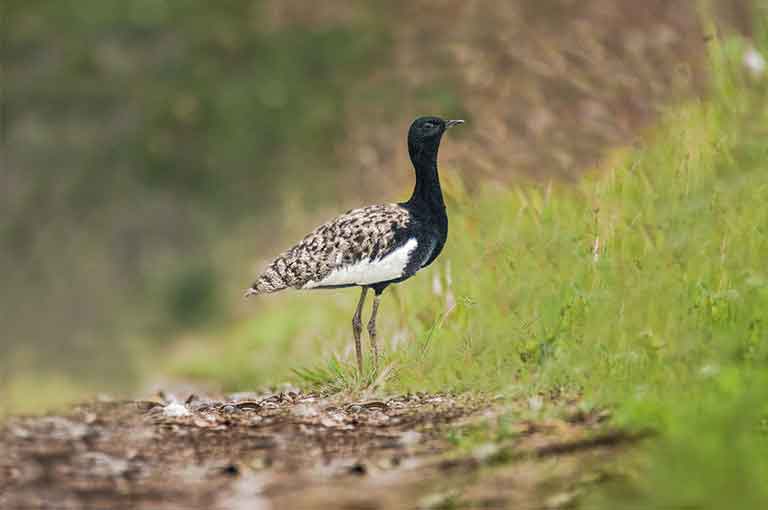
Bengal Florican
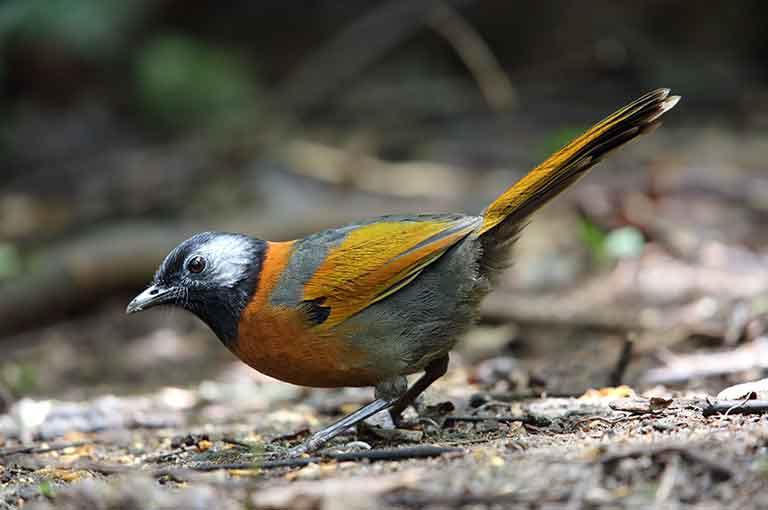
Collared Laughingthrush
Birdlife in the Mekong Delta
Southern Vietnam receives 11 inches of rain a month on an average, more than what some regions receive annually. High annual rainfall in South East Asia provides ideal conditions for evergreen forests
to flourish. There are two distinct types of evergreen forests: lowland and montane evergreen forests that are home to diverse bird species. In the lowland forests, typical species include cuckoos,
bulbuls, flowerpecks, woodpeckers, hornbills and barbets. Upper montane evergreen forests standing at heights of 1,700 meters above sea level are rich in bird species that include flycatchers, babblers,
thrushes and warblers. This is also where rare Collared Laughingthrush and Grey-crowned Crocias reside.
The Mekong Delta region is covered with natural grasslands, freshwater wetlands and coastal wetlands. Large parts of the natural grasslands in the Mekong Delta have been converted to agricultural land.
Untouched areas continue being home to the Bengal florican, the only member of the genus Houbaropsis and a Critically Endangered species on the IUCN Red List. The grasslands that remain get flooded
seasonally and are frequented by sarus cranes, the tallest flying birds in the world, during the winter. The Mekong Delta's native mangrove forests are inhabited by the Oriental Darter and many other
endangered species.
Since 1988, a total of 247 bird species has been recorded here, with an estimated 50% of the species dependent on wetlands, of which 20 are listed as globally threatened or near threatened. Over the
years, several artificial lakes and reservoirs have been created to help protect endangered species against extinction and maintain a healthy avifauna diversity.
Aboard the Pandaw on a three-night river cruise between Saigon and Phnom Penh, or
our seven-night cruise between Saigon and Siem Reap, you will be traveling through mangroves, bamboo groves and fruit orchards, all natural habitats for birdlife. A stop at Ben Tre, located on the riverbank and one of the Mekong Delta's most prosperous regions, is an excellent opportunity to spot the varied birdlife - up to 38 bird species live here and at sunset, you can spot many as they return to nest after a day of searching for food. On your second day, you will visit the Gao Giong bird sanctuary.
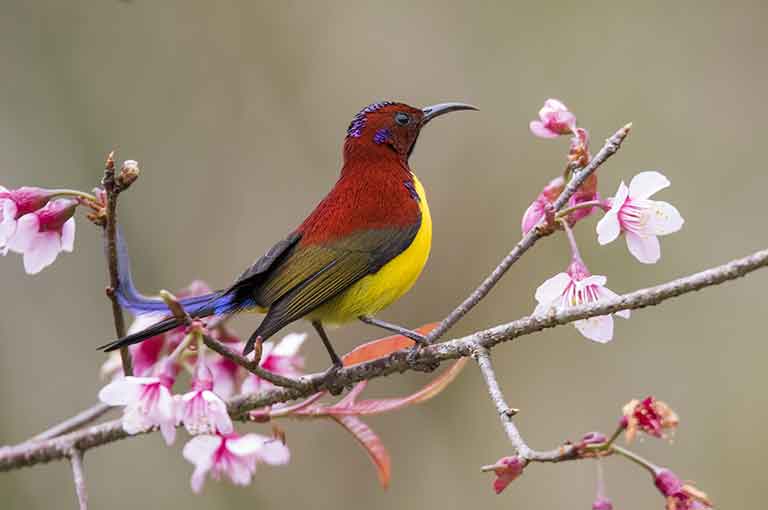
Gould's Sun Bird
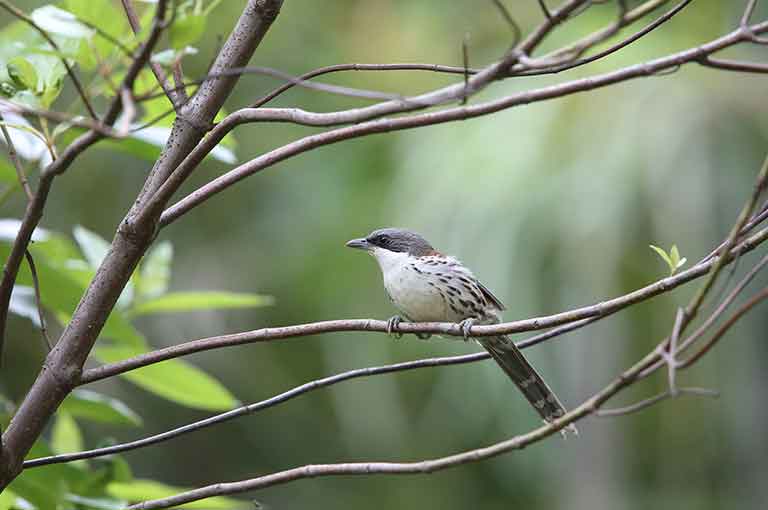
Grey Crowned Crocias
Gao Giong eco-tourism
Located in the southern province of Dong Thap, Gao Giong is a green oasis with stunning natural scenery. The ecotourism area is a habitat for several species of water birds, such as white egrets, wild
ducks and whistling ducks. An early morning or a late evening visit is the best time to witness the area's fantastic avifauna and landscape of wetlands covered with water lilies.
Dong Thap Muoi, known as the Plain of Reeds, is carpeted by kilometers of cajeput forests, and an important nesting area for birds. Hop into rowing boats to traverse canals that will take you to the
birds' principal nesting areas.
Years ago, the area was largely dry and undeveloped. During monsoon season, locals would bind many small boats together to create a temporary floating home on flooded rice paddies. Development work
began in 1985, occurring collaboratively between district authorities and volunteers. Channels were dug, irrigation systems built and bridges constructed to plant cajeputs, creating several hectares of
cajeputs where flora and fauna could thrive, particularly birdlife such as herons, storks and cormorants.
Gao Giong is divided into four zones comprising more than 70 kilometers of canals; 350 hectares are devoted to aquatic species while 40 hectares constitute a bird sanctuary. August to October is the
ideal time to visit Gao Giong: waters rising from the Mekong River bathe rice fields and attract birds in droves. Thousands of white storks explore the cajeputs to hunt for bugs and fish in the reeds and
water. Nearly 40 hectares of the park are covered by the nests of birds such as egrets, herons, wild ducks and sparrows, among other species.
The park's management has implemented thoughtful actions to preserve the green oasis' natural environment. For example, local residents trim only excessive cajeput branches to use as firewood. The
management has also built houses for underprivileged families, and offers free health check-ups and scholarships to the poor.
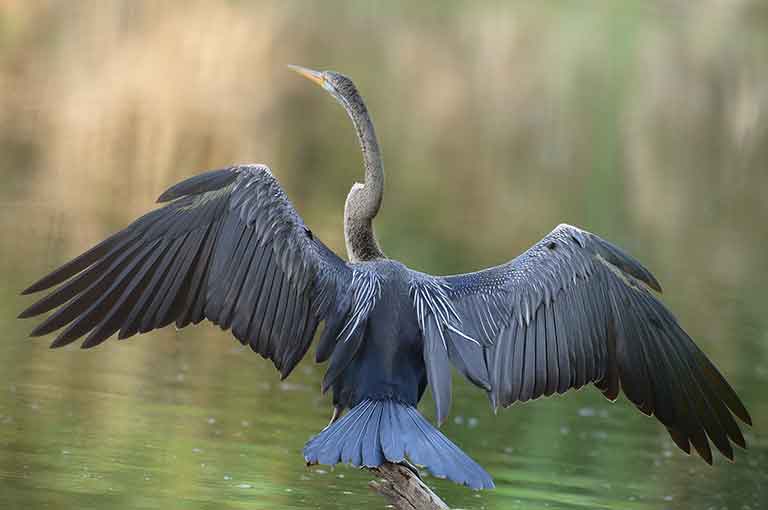
Oriental Darter
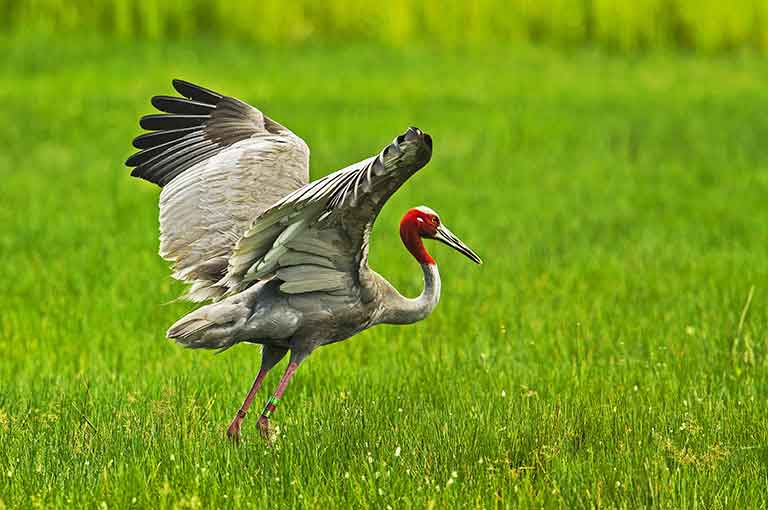
Sarus Cranes
A glimpse into the Gao Giong experience
To get to the Gao Giong ecotourism area, you must go through a maze of canals stretching 2 kilometers through the mangrove forest in a boat known as thuyen ba la by the southern people. Each boat has a
3-4 person capacity and is manned by young girls dressed in the traditional ao ba ba shirt and no´n la´ conical hat (commonly known as an Asian rice hat) or bandanna known as khan ran.
Prepare to immerse in the natural beauty surrounding you. If you've arrived in the rainy season, the channel waters can be as deep as 4m, in contrast to the 2m in the dry season. Sounds of moorhen will
likely rent the air and echo through the forest of myrtle trees with white flowers and a sweet fragrance. Among the pink and purple lotus flowers, you are sure to spot the occasional yellow riverhemp. Look
up and you will see birds flapping around or nesting in trees.
Breathe in the fresh air. Gao Giong is scattered with several old ga´o (nauclea) trees that purify the air throughout the Plain of Reeds. As you pass along forests of bamboo and melaleuca, you will spot
black, white and red storks, after all, Gao Giong is the largest stork garden in Duong Tharp Muoi (the forests served as the hiding grounds of liberation troops revolting against American forces). In 2018,
100,000 Asian openbill storks nested in Gao Giong's cajeput forests. The extremely rare species eat snails, large insects, frogs and crabs. In the past, the storks flew into the forests in search of food
and left, but have now started building their nests here.
There is a good chance that you will spot snake-headed fish, snakeskin gourami, hemibagrus and goby thrashing about in the water. In the rainy season, schools of small carps arrive from Cambodia, and
are a local delicacy, along with snake-headed fish and field rats.
In general, the lakes, marshes, flooded natural grasslands, mangroves, salt pans and mudlfats make the Mekong Delta an essential destination for birders. At the Tan Thanh intertidal located two hours
from Ho Chi Minh City, Red and Great Knots, White-faced Plover, Spoon-billed Sandpiper and Eastern Curlew can be spotted. Tram Chim National Park in Dong Thap is the place to go for Sarus Cranes and
hundreds of bird species, including bee-eaters and water fowls. Tra Su Proposed Nature Reserve is located near Chau Doc City, which is seasonally flooded by the Bassac River, and in 2003 was visited by
adult Milky Storks, the only confirmed recent record of this species in Vietnam. Deemed an endangered species in the IUCN Red List, Milky Storks are predominantly found in Peninsular Malaysia, Cambodia,
Sumatra, Java, Bali, Sulawesi, Sumbawa and Buton.
In the plain of the Mekong Delta, the remains of an elevated mangrove forest have been converted to the Bac Lieu bird sanctuary. Water logging in the rainy season beckons Indian Cormorants, among many
other species of waterbirds. In 1999, the sanctuary recorded 930 Indian Cormorants, more than 3% of the global population of this bird species.
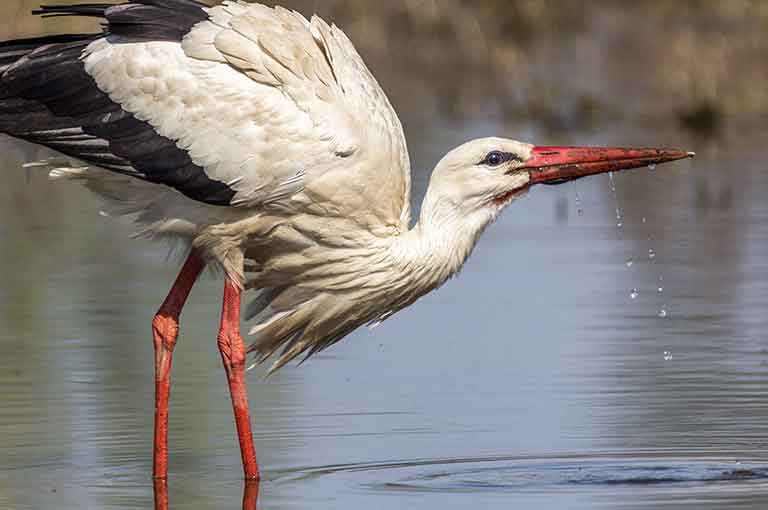
White Stork
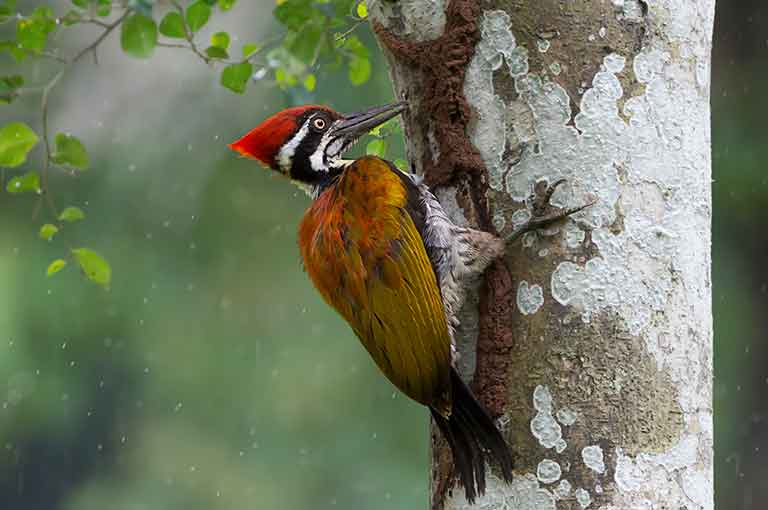
Woodpecker
Experience Gao Giong birdlife on the Classic Mekong
A visit to Gao Giong is included in Pandaw's Classic Mekong tour. It will be followed by an upstream cruise to Con Phuoc Island for a cultural experience comprising basket production, meeting local
woodworking artisans and a stop at a 100-year old Catholic Church. The Classic Mekong tour includes a visit to a Taoist temple, the Royal Palace and Silver Pagoda, and the silk island Koh Oknha Tey, among
other attractions. The 7-night tour begins at Saigon, familiarizes you with the natural bounty of the Mekong Delta and takes you through the rich countryside of Cambodia.
This cruise also runs the first and second half as two separate short cruises. You can join the expedition downstream beginning at Siem Reap to Kratie and the dolphin grounds, past Phnom Penh to silk island and to the Vietnam border, and further to Con Phuoc and Cho Lach islands, your trip ending at Mo Tho for a road transfer to Saigon. The upstream cruise begins at Saigon and through Ben Tre, Con Phuoc and Gao Giong to the Vietnam border around Tan Chau followed by Phnom Penh, silk island, Kratie and Dolphin grounds, and sailing downstream to moor at Kampong Cham for disembarkation and road
transfer to Siem Reap.